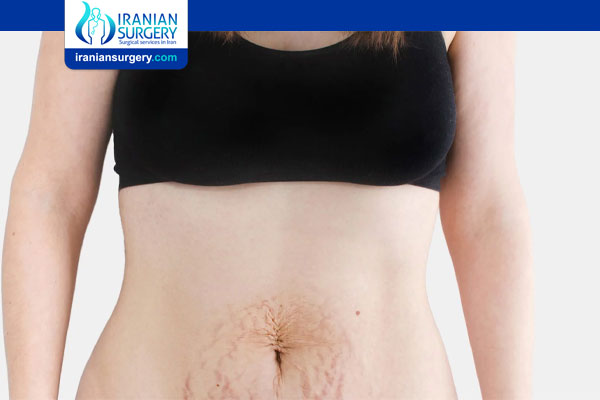Symptoms Of Muscle Separation or Diastasis Recti
Symptoms Of Muscle Separation or Diastasis Recti
Muscle separation or “diastasis recti” is a very common condition that I see in women post-pregnancy, and often repair as part of an abdominoplasty or “tummy tuck” procedure. But how can you tell if you have abdominal muscle separation, and what are the signs and symptoms? Read on to find out more.
Many, if not all women experience some degree of muscle separation post-pregnancy due to the expansion of the abdominal wall to accommodate for a growing baby. Although some women are able to function perfectly fine with a mild degree of muscle separation, others unfortunately suffer from chronic symptoms stemming from the weakened core that can only be relieved with surgical intervention.
What is Diastasis Recti?
The rectus abdominus muscles, which run side by side from the ribs down to the pubic area, are held together by a band of connective tissue (fascia). During pregnancy, the fascia naturally thins and stretches, allowing the muscles to spread apart to make room for the growing baby. For some women, the fascia gradually contracts back to normal in the months after giving birth. However, in many cases it is too weak to contract and stays stretched, causing the ab muscles to remain separated. This is diastasis recti.
Aesthetically, diastasis recti presents as a bulging or protruding belly—a “mummy tummy” or “post-baby pooch.” Many women with the condition feel that they still look pregnant, even years after having their last child.
Diastasis recti is not just a cosmetic issue. The abdominal muscles, which normally work together, can weaken significantly once they are stretched apart, leading to problems such as lower back pain, stress incontinence, digestive disorders, and hernia.
How Do I Know If I Have Muscle Separation?
You can “self-check” for abdominal muscle separation post birth by performing a basic physical assessment on yourself. This method can also be completed by your GP or physiotherapist.
. Lie on your back in a “sit up” position, with your legs bent and your feet flat on the floor.
. Come up to a “crunch” position by raising your shoulders off the floor slightly and look down towards your tummy. Engage your abdominal muscles. Use one hand to support your head if needed.
. With your free hand, gently feel along the midline of your abdominal muscles, both above and below your bellybutton. Take note if you can feel any “gaps” where you can fit a finger between these muscles.
. If you feel a gap between your muscles where you can fit more than one finger width, you likely have a mild to moderate case of abdominal muscle separation. I regularly operate on women with 4-8cm gaps!
Depending on how far post-partum you are, this gap may start to narrow as your muscles regain their strength. This self-assessment can be undertaken regularly to track the progress of your muscle separation.
Abdominal Muscle Separation Signs and Symptoms
Diastasis recti can often be spotted as a “pooch” or bulge in the mid to lower stomach, especially when you strain or contract your abdominal muscles. Other common symptoms associated with severe muscle separation include:
. Incontinence
. Constipation
. Poor posture or postural issues
. Bloating and digestive issues
. Lower back, pelvic or abdominal pain or discomfort
. Pelvic floor dysfunction
. Can result in an abdominal hernia in severe cases
Women with post-partum muscle separation may experience some or all of these symptoms over a course of time post birth.
Will A Diastasis Recti Go Away on Its Own?
Yes, sometimes. If you’ve had a baby within the past 6 to 12 months, be patient! It takes time for the body to readjust. A diastasis is more likely to close on its own if you had minimal weight gain during pregnancy, or if this was your first pregnancy. However, if you are at a healthy body weight, you’ve been battling a bulging belly for a year or longer, and diet and exercise have not helped, it may be time to consider surgery.
Treating Diastasis Recti with Tummy Tuck Surgery
A tummy tuck is specifically designed to tighten the abdominal wall inside and out. By placing permanent internal sutures in the fascia to close the separation, a plastic surgeon can repair a diastasis recti to restore a firmer, flatter abdominal shape. This often also alleviates secondary issues such as back pain, hernia or stress incontinence.
While some surgeons offer laparoscopic procedures to solely repair diastasis recti, I strongly recommend a full tummy tuck for several reasons:
. Most post-pregnancy patients with diastasis recti also have excess, sagging skin, which is removed during a tummy tuck.
. Closing a diastasis recti reduces abdominal circumference, which can create more loose skin. Repairing a diastasis recti with a tummy tuck allows a plastic surgeon to remove the optimal amount of skin based on what’s left after the muscles are tightened.
. A board-certified plastic surgeon is specifically trained and qualified to consider the aesthetic outcome, not only the medical outcome. This includes belly button reshaping to ensure a natural abdominal contour as well as careful scar placement to ensure you can conceal scars after your procedure.
. Many patients end up having a tummy tuck to improve results of a diastasis recti repair alone. Having a tummy tuck in the first place would avoid a second surgery.
About Iranian Surgery
Iranian surgery is an online medical tourism platform where you can find the best plastic surgeons in Iran. The price of Tummy Tuck in Iran can vary according to each individual’s case and will be determined by an in-person assessment with the doctor.
For more information about the cost of Tummy Tuck in Iran and to schedule an appointment in advance, you can contact Iranian Surgery consultants via WhatsApp number 0098 901 929 0946. This service is completely free.
Source:
https://www.beautybybuford.com/before-baby-body/do-i-have-diastasis-recti-how-to-fix-it/
https://hunterplasticsurgery.com.au/news/how-can-i-tell-if-i-have-muscle-separation-post-pregnancy


